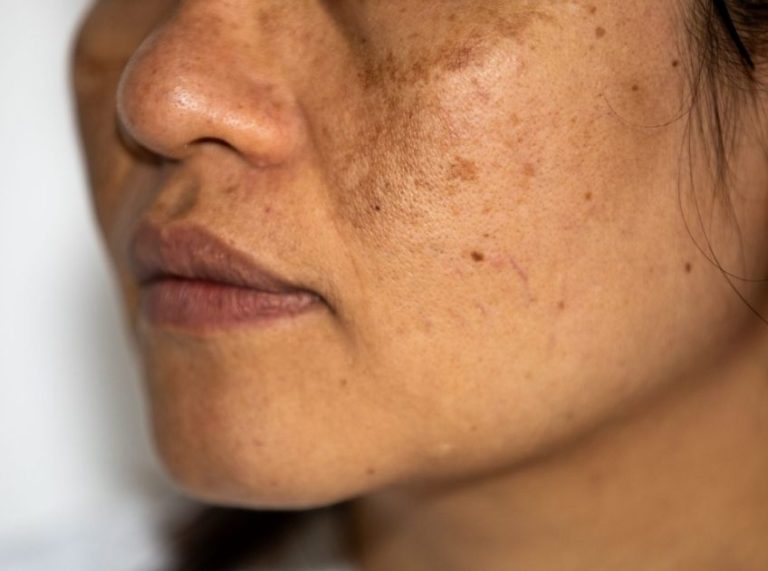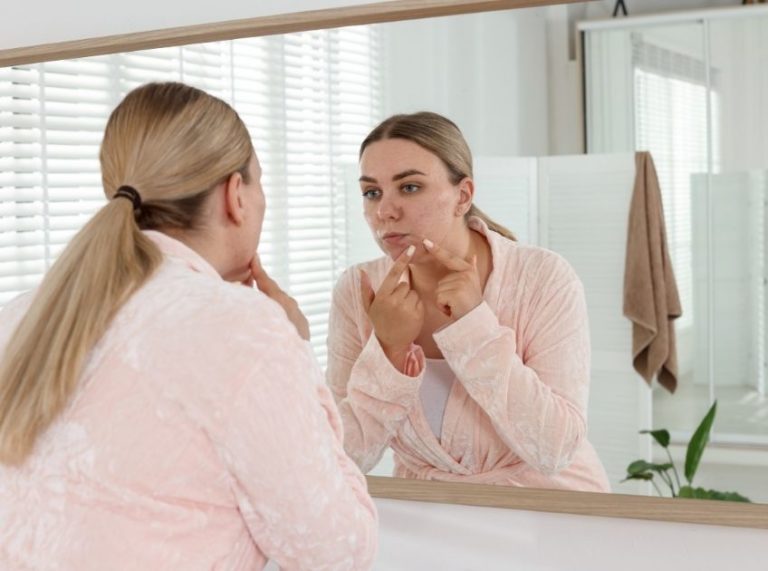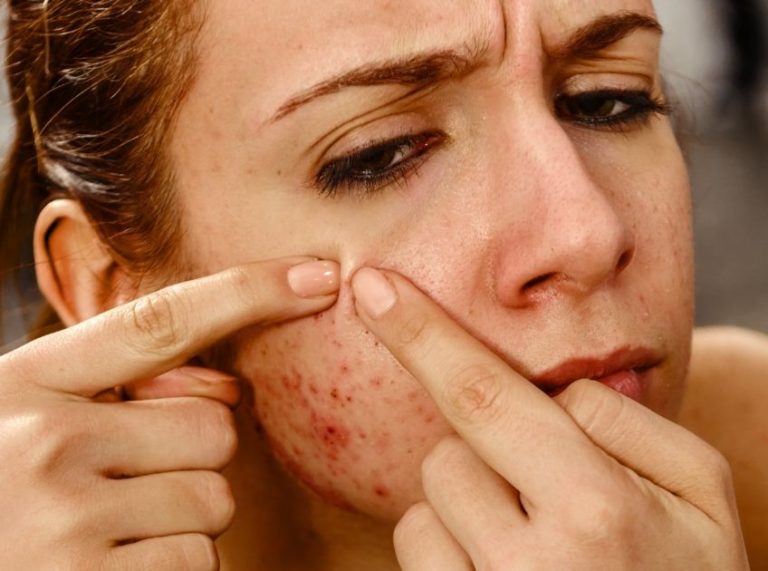
Important: This article is for informational purposes only. Please read our full disclaimer for more details.
You’ve just finished your skincare routine—serum, moisturizer, sunscreen—all the good stuff. But then, as you go to apply your foundation or touch your face, tiny little flakes start rolling off. It looks like your skin is shedding, but it’s not—it’s your skincare pilling.
Pilling is one of the most common (and annoying) skincare mishaps, especially if you’re layering multiple products. But here’s the good news: it’s fixable. Let’s break down exactly why it happens and how to stop it.
What Is Skincare Pilling—And Why Does It Happen?
Pilling occurs when products don’t absorb into the skin properly and instead gather on the surface (1). When you rub your face or apply makeup, these semi-dried particles clump together and form visible flakes or “balls” on your skin.
This isn’t a skin issue—it’s a product interaction issue. And while it doesn’t necessarily mean the product is bad, it does mean something in your routine isn’t working together quite right.
5 Reasons Your Skincare Is Pilling Like Crazy
Let’s dive into the main culprits behind this frustrating problem.
1. You’re Layering Too Much, Too Quickly
Applying your skincare in rapid-fire succession doesn’t give each layer time to absorb. When products pile up without fully setting, they form a sticky film, and that’s prime ground for pilling.
Fix it: Wait 30–60 seconds between each product. Let your skin fully absorb one layer before moving on to the next.
2. Wrong Product Textures Don’t Play Well Together
Mixing water-based serums with silicone-heavy moisturizers or oil-based creams can lead to friction between layers. These incompatible textures cause formulas to sit on top of one another, eventually balling up.
Fix it: Follow the “thinnest to thickest” rule—light, watery formulas first, followed by thicker, oil-based ones.
3. Silicones Are Sticking Around
Silicones (like dimethicone or cyclopentasiloxane) are often added to primers and moisturizers for their smoothing effect. But if layered over water-based products, they can cause slipping and—yep—pilling.
Fix it: Use silicone-based products sparingly or save them for the final step (like in a primer or sunscreen).
4. You’re Using More Product Than You Need
It’s tempting to slather on extra serum thinking more = better. But excess product means excess residue on your skin’s surface, which only increases the likelihood of pilling.
Fix it: Stick to pea-sized amounts unless otherwise instructed. Your skin can only absorb so much at once.
5. Dead Skin Buildup Is Getting in the Way
Flaky, dry skin acts like a rough canvas. When skincare hits that surface, it grabs onto the flakes and lifts product, causing those little clumps.
Fix it: Exfoliate regularly—2–3 times a week—with a gentle chemical exfoliant like glycolic acid or lactic acid to keep your skin smooth.
Quick Fixes: How to Prevent Pilling Like a Pro
- Give each layer time to absorb – Patience is your best friend.
- Check ingredient compatibility – Especially between silicone and water-based products.
- Go light-handed – Less is more.
- Exfoliate regularly – A clean base prevents buildup.
Apply with gentle pressure – Avoid aggressive rubbing, which disturbs layers.
Frequently Asked Questions (FAQ’S)
Q: Can pilling mean a product isn’t working?
A. Not necessarily. Pilling often reflects application errors or layering issues, not a faulty product. However, if it pills no matter what, it might not suit your skin type.
Q: Does pilling only happen with serums?
A. Nope. Pilling can occur with any product—serums, moisturizers, sunscreens, even makeup primers—especially when layered incorrectly.
Q: Is it okay to keep using products that pill?
A. If you love a product but it’s pilling, tweak how you use it. Switch its place in your routine or pair it with more compatible textures.
Final Thoughts: Skincare Should Feel Smooth—Not Rubbery
When your products start pilling, it’s not a sign of failure—it’s just a cue to reevaluate your technique. By adjusting your application method, understanding product textures, and letting your skin breathe between layers, you can transform your routine from flaky to flawless.Try this challenge today: Use just two products and focus solely on clean blending and light application. You’ll be amazed at the difference.
















